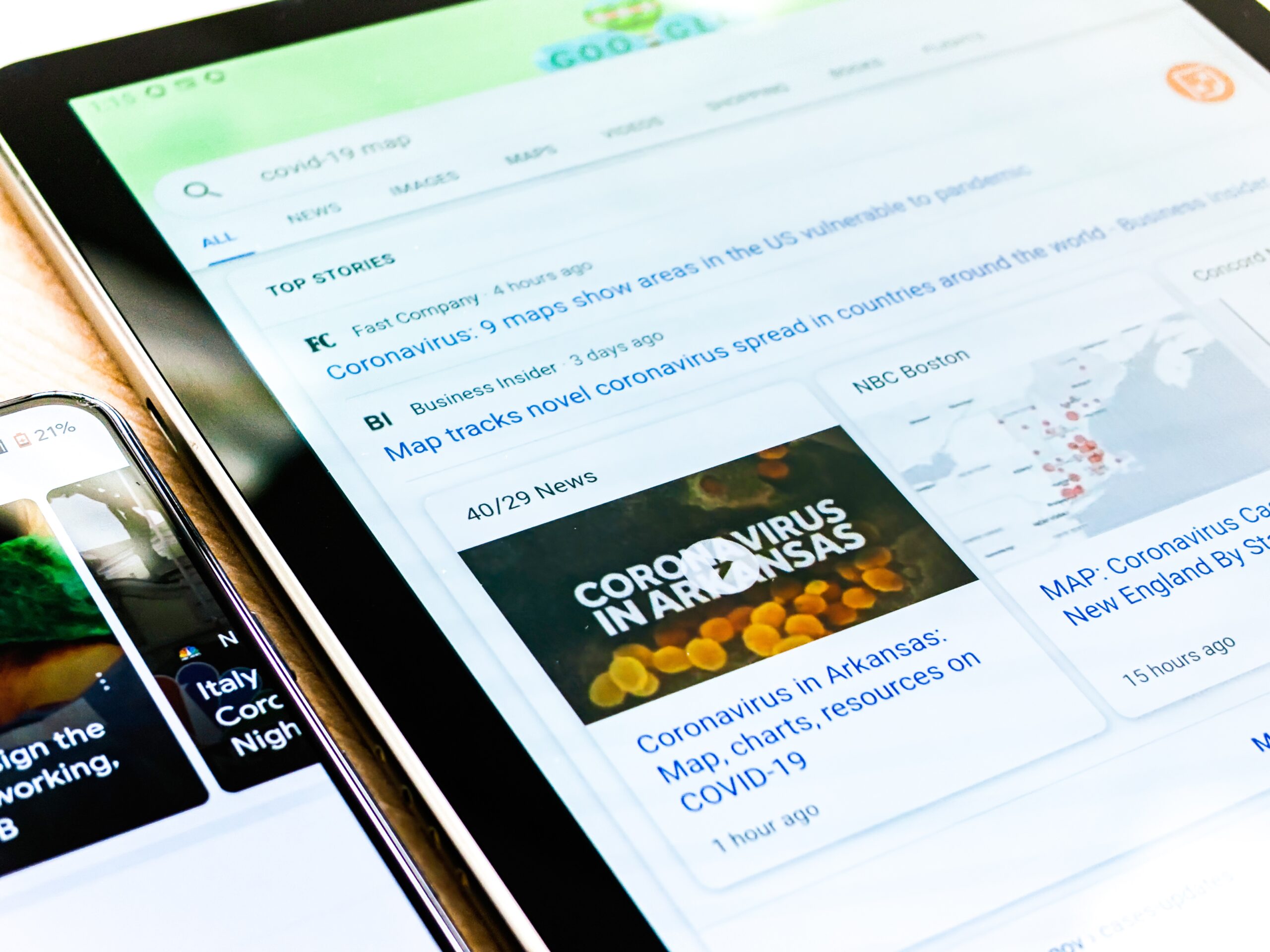Are you a blogger looking to monetize your platform? Look no further because we have compiled a list of ten effective monetization tips just for you! In this article, we will provide you with expert advice on how to turn your passion for blogging into a lucrative business. Whether you are a seasoned blogger or just starting out, these tips will help you maximize your earning potential and achieve financial success from your blog. So, let’s dive right in and discover how you can start monetizing your blog today!

Affiliate Marketing
Affiliate marketing is an excellent way to monetize your blog and generate passive income. By partnering with affiliate programs, you can earn a commission for promoting products or services. However, it’s crucial to choose the right affiliate programs that are relevant to your niche and align with your audience’s interests and needs.
Choose the right affiliate programs.
When selecting affiliate programs, consider the products or services that would be valuable to your audience. Look for reputable affiliate networks or individual programs that offer competitive commission rates, reliable tracking systems, and timely payouts. It’s also important to review the affiliate program’s terms and conditions to ensure they are fair and aligned with your goals.
Promote products/services relevant to your niche.
To maximize your affiliate marketing success, focus on promoting products or services that are directly related to your blog’s niche. By doing so, you’ll be targeting an audience that is more likely to be interested in the offerings and, therefore, more likely to make a purchase. For example, if you have a fashion blog, partnering with fashion retailers or beauty brands would be a natural fit.
Create helpful and honest reviews.
One effective way to promote affiliate products is by creating honest and insightful reviews. Rather than simply listing the features and benefits, provide your readers with a comprehensive evaluation of the product or service. Share your personal experiences, highlight the pros and cons, and offer practical tips or advice. This will not only establish your credibility but also help your audience make informed purchasing decisions.
Utilize affiliate links strategically.
Strategic placement of affiliate links can significantly impact your conversions. Consider incorporating affiliate links in your blog posts naturally, ensuring they add value to the reader’s experience. For example, if you mention a specific product or service that you’re affiliated with, you can hyperlink relevant keywords or phrases to the affiliate landing page. Additionally, utilize visually appealing buttons or banners within your blog’s sidebar or footer to draw attention to the affiliate offerings.
Native Advertising
Native advertising is another popular monetization strategy that allows you to seamlessly integrate sponsored content into your blog. The key to native advertising success lies in blending the ads with your content, maintaining high quality, and tracking their performance.
Blend native ads with your content.
Native ads should blend seamlessly with your blog’s overall design and layout. The goal is to make them appear as organic and non-intrusive as possible, ensuring a positive user experience. Consider incorporating sponsored content within relevant articles or creating custom ad placements that closely resemble your regular content. By doing so, you’ll increase the chances of engagement and conversions.
Focus on high-quality and relevant native ads.
To maintain the integrity of your blog and keep your audience engaged, it’s essential to prioritize high-quality and relevant native ads. Choose brands or services that align with your niche and provide value to your readers. It’s also important to review the sponsored content before publishing it, ensuring it meets your standards and resonates with your audience.
Track and analyze native ad performance.
Tracking and analyzing the performance of your native ads is crucial to optimize their effectiveness. Most native ad platforms provide analytics tools that allow you to monitor key metrics such as impressions, click-through rates, and conversions. By analyzing this data, you can identify which ads are performing well and adjust your strategy accordingly. Experiment with different placements, ad formats, and messaging to find the optimal combination for maximum results.
Experiment with different ad formats
Don’t be afraid to try different ad formats to keep your native advertising fresh and engaging. Aside from traditional sponsored articles, consider incorporating other formats such as sponsored videos, product placements, or interactive quizzes. These alternative formats can effectively capture your audience’s attention and increase brand engagement.
Sponsored Posts
Sponsored posts are a form of brand collaboration where you partner with companies or brands to create content that promotes their products or services. To ensure successful sponsored posts, it’s important to collaborate with brands that align with your audience, disclose sponsored content, maintain editorial integrity, and negotiate fair compensation.
Collaborate with brands that align with your audience.
When considering sponsored posts, it’s crucial to collaborate with brands that align with your audience’s interests and values. Choose companies or products that genuinely resonate with your readers and offer value to them. By partnering with brands that your audience already has an affinity for, you increase the likelihood of successful collaborations and customer conversions.
Clearly disclose sponsored content.
Transparency is key when it comes to sponsored posts. It’s important to clearly disclose to your readers that the content is sponsored or in partnership with a specific brand. This transparency builds trust with your audience and maintains the integrity of your blog. Clearly state and visibly identify the sponsored content with a disclosure statement or tag, such as “This post is sponsored by [Brand Name].”
Maintain editorial integrity
While collaborating with brands, it’s crucial to maintain your editorial integrity. Your readers value your unbiased opinion, so it’s important to carefully select the brands and products you choose to promote. Make sure the sponsored content aligns with your blog’s niche and is something that you genuinely believe in. Providing honest feedback and evaluations, even in sponsored posts, will enhance your credibility and resonate with your audience.
Negotiate fair compensation
When it comes to sponsored posts, it’s important to negotiate fair compensation for your time and effort. Consider your blog’s reach, engagement, and the value you can provide to the brand. Ensure that you are adequately compensated for your work, including the creation of high-quality content, promotion on your platforms, and potential audience reach.
Premium Content
Creating premium content is a monetization strategy that involves offering exclusive content or services to subscribers who pay a fee. By providing additional value and perks to premium members, you can generate a recurring revenue stream while strengthening your relationship with your dedicated audience.
Create exclusive content for subscribers.
To entice readers to subscribe and become premium members, it’s important to create exclusive content that is not available to regular visitors. This can include in-depth guides, tutorials, behind-the-scenes insights, or special offers. The goal is to provide valuable content that resonates with your audience and motivates them to invest in your premium membership.
Offer tiered membership options.
To cater to different preferences and budgets, consider offering tiered membership options. This allows your audience to choose the level of access and benefits that best aligns with their needs. For example, you could have a basic membership tier with limited perks and a premium membership tier that offers enhanced content, early access, or one-on-one support.
To incentivize premium membership, it’s important to provide additional value and perks to your subscribers. This can include access to exclusive online communities, discounts on products or services, personalized content recommendations, or priority customer support. These perks will make subscribing to the premium content more enticing and create a sense of exclusivity.
Use a reliable and secure payment gateway
When offering premium content, it’s important to use a reliable and secure payment gateway. Choose a trusted e-commerce platform or payment processor that offers seamless integration with your blog. Ensure that the checkout process is user-friendly, offers various payment methods, and guarantees secure transactions. By providing a smooth and secure payment experience, you’ll enhance trust and encourage more subscribers to join your premium content offering.

Email Marketing
Email marketing is a powerful tool for monetizing your blog and nurturing your relationship with your audience. By building a strong email list, segmenting your subscribers, providing valuable content, and including compelling call-to-actions (CTAs), you can drive conversions and boost revenue.
Build a strong email list.
Building a strong email list is the foundation of successful email marketing. Implement various strategies to encourage visitors to subscribe to your mailing list, such as offering a free resource, exclusive content, or a newsletter signup incentive. Ensure that your signup forms are easy to locate and use and clearly communicate the value subscribers will receive by joining your list.
Segment your subscribers for targeted campaigns.
Segmenting your email list allows you to send targeted campaigns tailored to specific groups of subscribers. By dividing your audience based on criteria such as demographics, behavior, or interests, you can send more personalized and relevant content. This segmentation increases the chances of engagement and conversion as you’re catering to the specific needs and preferences of each group.
Provide valuable content in your emails
To keep your subscribers engaged and eager to open your emails, it’s important to consistently provide valuable content. Avoid bombarding your audience with sales pitches or irrelevant messages. Instead, focus on delivering informative and entertaining content that addresses their pain points, offers solutions, or inspires them. By providing genuine value, you’ll establish trust and loyalty with your subscribers, increasing the likelihood of them becoming paying customers.
Include compelling CTAs to drive conversions.
Each email you send should include a compelling call-to-action (CTA) that directs your subscribers to take the desired action. This could be making a purchase, signing up for a course, or even sharing your content. Ensure that your CTAs are clear, visually appealing, and prominently placed within your emails. Experiment with different CTAs and track their performance to find the most effective one for driving conversions.
Sell Digital Products
Selling digital products is a lucrative monetization strategy that allows you to leverage your expertise while providing value to your audience. By identifying your audience’s needs and preferences, creating high-quality digital products, using an e-commerce platform, and implementing effective marketing strategies, you can generate revenue and build a loyal customer base.
Identify your audience’s needs and preferences.
To create successful digital products, it’s important to understand your audience’s needs and preferences. Conduct market research, engage with your readers, and analyze their feedback to identify the gaps or challenges they are facing. This will help you develop digital products that provide practical solutions and resonate with your audience.
Create high-quality and valuable digital products.
The success of your digital products relies on the quality and value they offer. Whether it’s an e-book, online course, templates, or software, ensure that your products are well-researched, comprehensive, and easy to understand. Focus on delivering tangible results or solutions to your audience’s problems. By providing high-quality products, you’ll enhance your reputation and encourage repeat purchases.
Use an e-commerce platform to sell your products.
To effectively sell your digital products, it’s important to choose a reliable e-commerce platform. Look for platforms that offer seamless integration with your blog, secure payment gateways, customizable product pages, and easy digital product delivery. This will ensure a smooth customer purchasing experience and help you manage your products’ inventory and sales efficiently.
Implement effective marketing strategies.
To maximize the reach and sales of your digital products, implement effective marketing strategies. Utilize various channels such as social media, email marketing, guest blogging, or collaborations with influencers to promote your products. Leverage your existing audience and engage with potential customers in relevant communities or forums. Additionally, consider offering limited-time promotions or discounts to create a sense of urgency and encourage conversions.

Display Advertising
Display advertising involves placing ads, typically banner ads, on your blog to generate revenue. To optimize the effectiveness of display advertising, it’s important to optimize ad placements, use responsive ad units, experiment with different ad networks, and monitor ad performance.
Optimize ad placements for maximum visibility
Strategic ad placement is crucial to maximize the visibility and click-through rates of display ads. Place ads in areas that are highly visible, such as above-the-fold or within the content itself. Consider the flow and design of your blog, ensuring that the ads complement the overall aesthetics without overwhelming the user experience. Frequently analyze the performance of different ad placements, and adjust them based on user behavior and engagement.
Use responsive ad units for mobile optimization
With the increasing use of mobile devices, it’s essential to ensure that your display ads are optimized for mobile viewing. Implement responsive ad units that automatically adjust their size and layout based on the device being used. This will provide a seamless and user-friendly experience for your mobile audience, increasing the chances of ad engagement and conversions.
Experiment with different ad networks
There are numerous ad networks available for bloggers to choose from. Experiment with different ad networks and platforms to find the most suitable ones for your blog. Consider factors such as their ad inventory, payout rates, targeting options, and ease of integration. By diversifying your ad networks, you can maximize your revenue potential and ensure you’re reaching a wide range of advertisers.
Monitor ad performance and make necessary adjustments
Regularly monitor the performance of your display ads to identify areas for improvement and make necessary adjustments. Analyze key metrics such as impressions, click-through rates, and earnings to assess the effectiveness of your ads. Use this data to optimize your ad strategy by adjusting ad placements, ad formats, or ad networks. Continuous monitoring and adjustments will help you maximize your display advertising revenue.
Sponsorship and Brand Collaborations
Sponsorship and brand collaborations offer a mutually beneficial opportunity for bloggers to partner with brands and companies. By establishing your blog as an influential platform, reaching out to relevant brands, creating engaging sponsorship packages, and maintaining transparency and authenticity, you can attract brand partnerships and monetize your blog effectively.
Establish your blog as an influential platform.
To attract brands and companies for collaborations, focus on establishing your blog as an influential platform within your niche. Consistently deliver high-quality content, grow your audience organically, and actively engage with your readers. Provide value through informative and entertaining posts, and position yourself as an authoritative voice within your industry. By becoming a trusted and recognized blogger, you’ll increase your chances of attracting brand collaborations.
Reach out to brands and companies for collaborations.
Don’t wait for brands to approach you – proactively reach out to relevant brands and companies for collaborations. Research brands that align with your audience and blog’s niche, and craft personalized pitches highlighting the mutual benefits of the collaboration. Explain how your blog and audience can add value to the brand, and propose specific ideas or partnership opportunities. Be persistent and professional in your approach, and follow up regularly to demonstrate your genuine interest in working together.
Create engaging and unique sponsorship packages
When approaching brands for collaborations, create engaging and unique sponsorship packages that stand out from the competition. Offer customized sponsorships that align with the brand’s goals and your blog’s strengths. Highlight the various promotional opportunities you can provide, such as sponsored posts, social media campaigns, giveaways, or brand ambassadorships. Tailor the packages to suit the brand’s budget and objectives, showcasing the value they will receive from partnering with your blog.
Maintain transparency and authenticity
Transparency and authenticity are vital when it comes to brand collaborations. Clearly disclose to your audience that a post or content is sponsored or in partnership with a brand. Maintain editorial integrity and only collaborate with brands and products that align with your values and genuinely resonate with your audience. Authenticity builds trust with your readers and strengthens your reputation as a credible influencer. By being transparent and honest, you’ll enhance the success and long-term sustainability of your brand collaborations.
Create Online Courses
Creating and selling online courses is a highly effective way to monetize your expertise and knowledge. By identifying a profitable course topic, developing a comprehensive curriculum, choosing a suitable e-learning platform, and promoting your course through various channels, you can generate revenue while providing value to your audience.
Identify a profitable course topic
To create a successful online course, it’s crucial to identify a profitable course topic that meets the needs and demands of your audience. Research popular trends, industry gaps, or common challenges within your niche. Consider your area of expertise and how you can provide practical solutions or valuable insights. By selecting a topic that resonates with your audience and offers tangible benefits, you’ll increase the attractiveness and sales potential of your course.
Develop a comprehensive course curriculum
A comprehensive course curriculum is essential for delivering value and ensuring the success of your online course. Break down the topic into logical modules or lessons that provide a step-by-step learning experience. Ensure that the content is well-structured, engaging, and supported by relevant resources such as videos, worksheets, or quizzes. Tailor the curriculum to different skill levels or learning preferences to accommodate a broader audience.
Choose a suitable e-learning platform
Selecting a suitable e-learning platform is crucial for hosting and delivering your online course. Look for platforms that offer user-friendly interfaces, customization options, payment processing, and analytics. Consider the platform’s scalability and compatibility with your website or blog. Additionally, ensure that it provides the necessary tools for effectively engaging with and supporting your course participants, such as discussion forums or Q&A features.
Promote your course through various channels
Promotion is key to driving enrollments and maximizing your online course revenue. Leverage your blog’s audience and engage with your email subscribers and social media followers. Create compelling landing pages or dedicated course websites that highlight the benefits and features of your course. Utilize email marketing, guest blogging, collaboration opportunities, and paid advertising to expand your reach and attract potential students. Continuously analyze and optimize your marketing efforts to improve course visibility and conversions.
Offer Coaching or Consulting Services
If you possess expertise in a specific area, offering coaching or consulting services can be a lucrative monetization strategy. By defining your expertise and target audience, creating attractive service packages and pricing, leveraging your blog content, and marketing your services through social media and networking, you can generate revenue while helping others achieve their goals.
Define your expertise and target audience
To provide effective coaching or consulting services, it’s crucial to define your expertise and target audience. Identify the specific area or niche in which you excel and have a deep understanding. Consider the type of clients or individuals who would benefit from your expertise and align with your coaching style. By focusing on a specific niche, you position yourself as a specialist and attract clients who value your unique knowledge and insights.
Create attractive service packages and pricing
Develop attractive service packages that cater to the needs and preferences of your target audience. Consider the duration, intensity, and level of personalization that each package entails. Offer options such as one-on-one coaching sessions, group coaching, or consulting packages. Define your pricing structure based on the value you provide and the market rates for similar services. Clearly communicate the benefits and outcomes of each package to entice potential clients.
Leverage your blog content to demonstrate your expertise
Your blog content is an invaluable tool for showcasing your expertise and building credibility with potential clients. Create blog posts, articles, or case studies that highlight your knowledge and provide practical insights. Share success stories, testimonials, or examples of how you’ve helped clients achieve their goals. Consistently provide valuable content that reflects your coaching or consulting approach, fostering trust and attracting individuals who resonate with your message.
Marketing your coaching or consulting services is crucial for attracting clients. Utilize social media platforms such as LinkedIn, Twitter, or Facebook to share valuable content, engage with your audience, and build professional networks. Participate in industry-related events, conferences, or webinars to establish connections and showcase your expertise. Offer free consultations or discovery calls to potential clients to build rapport and demonstrate the value you can provide. Continuously expand your professional network and leverage word-of-mouth referrals to widen your client base.











